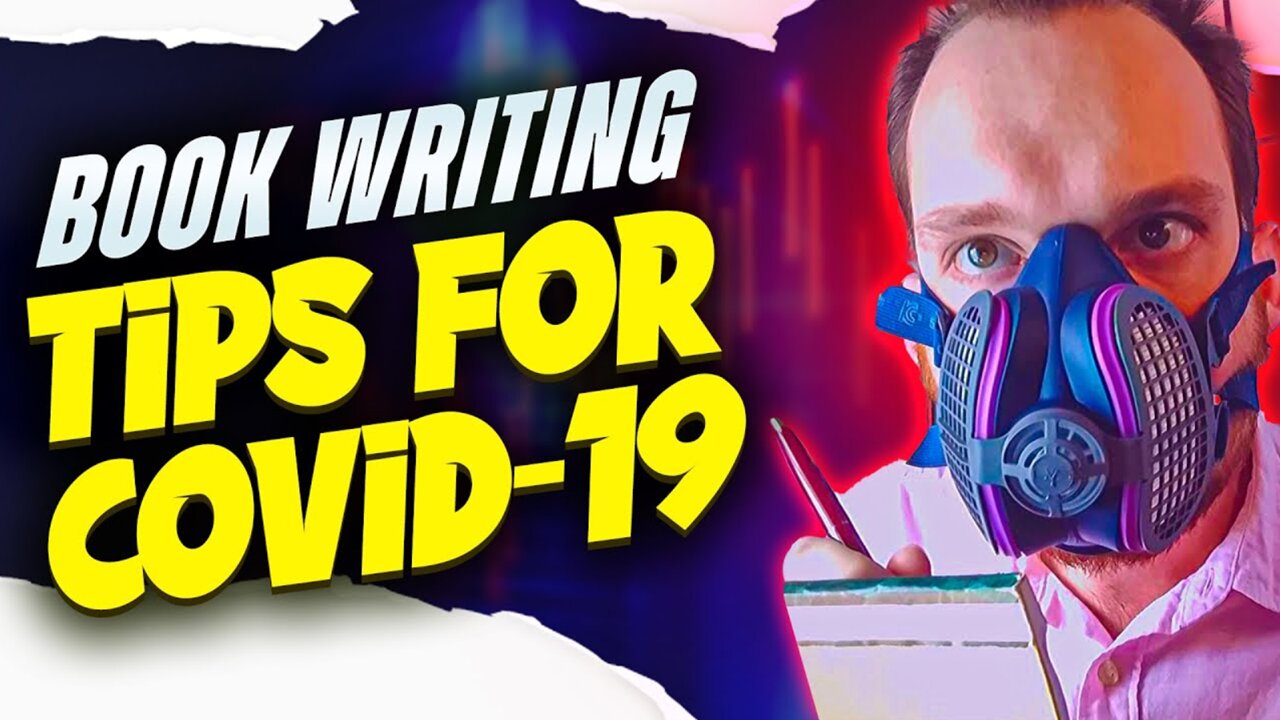Premium Only Content

How to Write a Book Outline: Tips from Celebrity Ghostwriter & Persuasive Writing Coach Joshua Lisec
👉 Write a useful book that converts readers into high-paying clients. Free training shows you how: https://lisecghostwriting.com/golden/ 📖
Many aspiring authors have a story, a message, or a body of expertise they long to share—but few know where to start. “How to Write a Book Outline: Tips from Celebrity Ghostwriter & Persuasive Writing Coach Joshua Lisec” dives into the exact steps that separate unfinished drafts from professionally structured, commercially viable books. Whether the goal is to publish a nonfiction book, launch a business book, or simply learn how to write a book outline that captures readers’ attention from the first sentence, this video lays out the proven path from concept to completion.
Viewers discover what bestselling authors, thought leaders, and industry experts do differently—and how those differences begin not with marketing, but with outlining. Lisec, a celebrity ghostwriter and writing coach, has built a global reputation by helping entrepreneurs, executives, and creators write books that both persuade and perform. His approach to persuasive writing blends storytelling, structure, and strategy, ensuring that every chapter earns its place in the reader’s journey.
At the core of this video is a simple but powerful principle: a book outline isn’t just a planning tool—it’s the blueprint for the book’s success. When someone learns how to write a nonfiction book, it’s easy to think the hardest part is the writing itself. But Lisec explains that understanding how to outline a nonfiction book is the true foundation. A clear book chapter outline example keeps ideas focused, establishes credibility, and sets the stage for persuasive momentum from the first paragraph.
Lisec introduces what he calls the “Six Pillars of Influential Content,” a comprehensive framework he’s used as a business ghostwriter for dozens of bestselling titles. These pillars—credibility, connection, compelling writing, counter-industry insight, call to action, and circulation—are designed to transform any outline into a roadmap for impact. By following these steps, writers create more than just a manuscript—they craft a magnetic experience that engages readers and encourages them to act.
The first step, credibility, answers why anyone should listen to the author in the first place. Viewers learn how to start a book first sentence that immediately communicates authority and relatability. For those working on how to write a business book or a personal development guide, this section shows how to weave experience and storytelling into an opening that sells the book’s promise.
From there, Lisec moves to connection—the second pillar—where the outline shifts focus to the reader’s journey. A powerful book outline makes it clear how readers move from their “before” state to their desired “after.” The outline should show not just what the book will teach, but how each chapter contributes to transformation. It’s a lesson in designing a writing a book template that captures not only information but also emotional resonance.
A well-written book is clear and accessible, which is why Lisec emphasizes the compelling pillar. Through examples, he demonstrates how to write a book in 30 days or even how to write a book in a week by breaking down ideas into actionable, easy-to-digest segments. The result is writing that feels conversational, human, and highly persuasive. Viewers see how simplifying language actually strengthens authority—a principle every successful writing coach and celebrity ghostwriter knows by heart.
The next pillar, counter-industry, invites authors to challenge outdated or false advice within their field. By identifying and addressing myths, writers create instant trust with readers who feel frustrated by conventional wisdom. This approach is a cornerstone of persuasive writing, giving the author’s message urgency and originality. Lisec reveals how to structure these insights inside the book template, ensuring that each chapter feels bold yet credible.
The call-to-action pillar turns the book from a passive reading experience into an active invitation. Every outline, Lisec says, should plan for conversion moments—places where readers can go deeper, download tools, join a community, or apply the book’s methods. This is how professionals turn a $20 book into a thriving brand or business. Authors seeking how to write a book and get it published will find this insight especially valuable; publishers look for manuscripts that lead somewhere beyond the final page.
Finally, Lisec explains circulation, the pillar that ensures a book reaches beyond its initial audience. Writers who master this concept create books that spread through word of mouth, crossing boundaries of profession, age, and culture. The more universally the book outline resonates, the further its message travels.
Throughout the video, Lisec demonstrates that how to write a book outline isn’t about filling in a template—it’s about thinking strategically. The outline becomes a mirror of the reader’s experience, guiding them step by step toward transformation. Those working from a book chapter outline example learn how to shape each section around stories, lessons, and actions that drive momentum. It’s the same method Lisec uses when ghostwriting for high-profile entrepreneurs and influencers whose books dominate categories on Amazon and beyond.
For first-time authors wondering how to write a nonfiction book, Lisec’s process answers critical questions:
– What makes a reader choose one book over another?
– How can a book’s introduction act as a persuasive pitch?
– Which chapter order builds the strongest emotional pull?
– How can an author avoid the common traps that leave books forgotten after chapter three?
This structured yet creative process doesn’t just show how to write a book pdf or follow a formula—it helps writers think like professionals who understand audience psychology and publishing realities. Lisec’s advice empowers anyone—entrepreneur, expert, or everyday storyteller—to approach outlining with the same confidence as a seasoned business ghostwriter.
By the end of the video, viewers realize that writing a book is no longer a distant dream. With the right book template, clear planning, and persuasive structure, anyone can move from uncertainty to authorship. Lisec’s approachable teaching style turns what once felt overwhelming into a practical, step-by-step process.
Whether someone is figuring out how to write a book outline for the first time or refining an advanced book chapter outline example, this guide provides clarity. It’s not just about finishing a book—it’s about crafting one that connects, converts, and circulates widely. With Lisec’s insight as a celebrity ghostwriter and writing coach, the path becomes achievable and even exciting.
Every sentence of this video reflects Lisec’s philosophy: that the most successful authors aren’t the ones who write the fastest, but the ones who outline with intention. They know where their book is going, why it matters, and how it will move readers to action. Anyone ready to take their book idea seriously will find in this masterclass the map they’ve been searching for—a detailed, repeatable system that turns inspiration into influence.
By mastering how to write a book, how to outline a nonfiction book, and how to use persuasive writing to captivate readers, aspiring authors can finally move beyond hesitation. Guided by Joshua Lisec’s proven framework, they learn not only how to write a book outline, but how to build a legacy one well-structured chapter at a time.
-
 10:37
10:37
TheSaltyCracker
15 hours agoMassive Brawl Breaks Out in Bass Pro Shop Over Bathroom
19.8K138 -
 16:40
16:40
Actual Justice Warrior
12 hours agoSydney Sweeney REFUSES To Apologize For Being White
1.89K12 -
 1:57:23
1:57:23
MG Show
17 hours agoTrump Makes Announcement; Erika Kirk 1st Interview
16.6K20 -
 8:01
8:01
MattMorseTV
11 hours ago $0.14 earnedTrump just GUTTED the ENTIRE SYSTEM.
60.2K77 -
 20:02
20:02
Nikko Ortiz
11 hours agoBlades And Sorcery Is The Ultimate Medieval Fantasy
8.27K5 -
 2:12:18
2:12:18
Side Scrollers Podcast
19 hours agoSide Scrollers VTuber TAKE OVER with Kirsche, Rev Says Desu & DarlingStrawb | Side Scrollers
90.9K13 -
 29:15
29:15
BlabberingCollector
1 day agoHarry Potter X Fortnite, Fans Reee Over Trans Rights, NEW Audiobooks Are OUT, Wizarding Quick Hits
7.8K -
 1:20:42
1:20:42
The Connect: With Johnny Mitchell
5 days ago $0.29 earnedThe Truth Behind The U.S. Invasion Of Venezuela: Ed Calderon Exposes American Regime Change Secrets
7.34K4 -
 LIVE
LIVE
Lofi Girl
3 years agolofi hip hop radio 📚 - beats to relax/study to
246 watching -
 21:39
21:39
TruthStream with Joe and Scott
2 days agoJoe, Scott and Lewis, Censorship and the Nov 8th event in Carlsbad California!
12.1K2